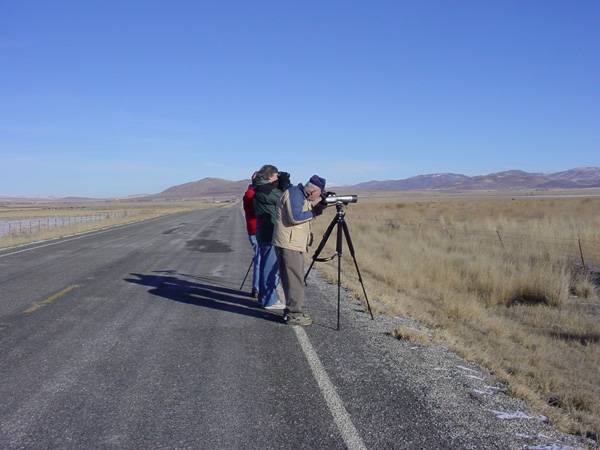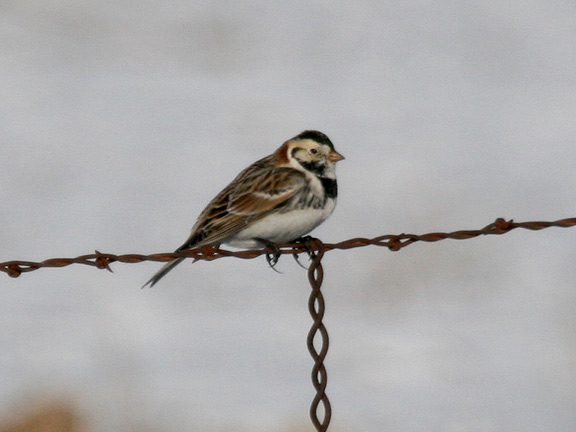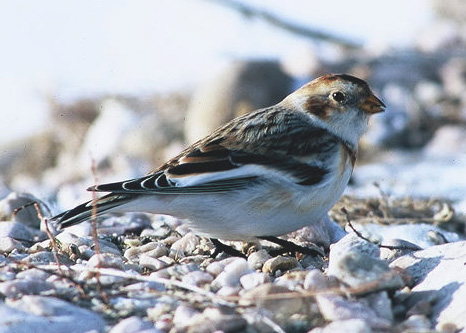|
UOS Quick Chase, January 22, 2007
On Saturday, January 20, 2007, Kris Purdy, during her
northern Utah birding rounds, came upon
several small flocks of Horned
Larks in northern Utah, particularly along State Route 83 heading north
from the ATK Thiokol plant just south of Howell. She examined the birds
closely and was delighted to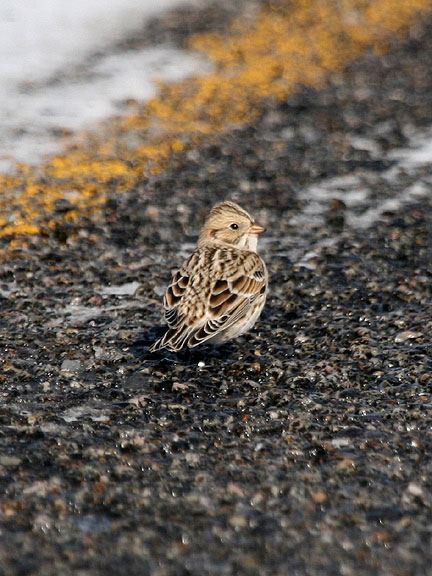 identify a Lapland Longspur among the
Larks. This species is known to migrate as far south as northern Utah,
although they are not observed every year. They probably occur annually but
are not always seen by knowledgeable birders or DWR employees.
identify a Lapland Longspur among the
Larks. This species is known to migrate as far south as northern Utah,
although they are not observed every year. They probably occur annually but
are not always seen by knowledgeable birders or DWR employees.
The next day, January 21, Tim Avery, Colby Neuman, and Dave Slager ventured
up to the area that Kris had posted on the Utah BirdTalk website. At
milepost 26.5, they not only encountered one Lapland Longspur, but over the
course of two hours they counted at least 22 individuals of the species.
They also were able to find one Snow Bunting, which also extends into
northern Utah during its winter sojourn.
With this wave of birds, Steve Carr, UOS Field Trip Coordinator, was certain
that at least some of the Longspurs would be available for observation, so
he organized a UOS-sponsored Quick Chase. The announcement was made over the
Utah BirdTalk network for any interested birders to participate. Leaving
Salt Lake City at 8:30 a.m. on Monday, January 22, Bob MacDougall and Bob
Bradley joined Steve for the run up to Howell to locate the birds. The
excursion was successful. Following Kris' and Tim's, Colby's, and Dave’s
directions they went right to the area,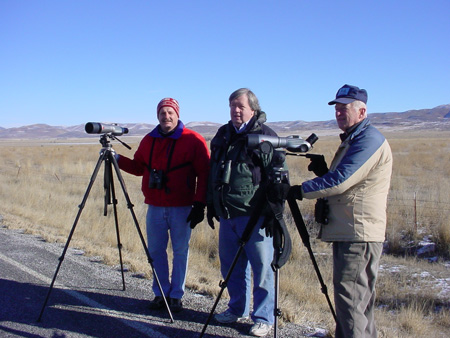 actually between MP 26.3 and 26.5 on
SR 83. Betsy Beneke, president of UOS, also drove up from Brigham City and
had located some flocks of Larks that included the Longspurs. Most of the
time the flocks were hidden in the tall grass clumps alongside the highway. actually between MP 26.3 and 26.5 on
SR 83. Betsy Beneke, president of UOS, also drove up from Brigham City and
had located some flocks of Larks that included the Longspurs. Most of the
time the flocks were hidden in the tall grass clumps alongside the highway.
Occasionally the flocks would ascend into the air, then drop back down,
sometimes in the same place, often a few hundred feet away. A couple of
semi-trailer trucks roared by, which stirred up the birds, then when they
landed and got settled, the first one to venture out onto the roadside was
the Snow Bunting. Then came several Longspurs and Horned Larks.
The weather was briskly cold, so the group was only there for less than a
half-hour and saw at least eight Longspurs, and heard several others in the
grasses that were not observable. These were life-bird observations for the
two Roberts. A hearty thanks was offered to Kris and the others for locating
and describing the location for others to follow.
While in the same general environs, the group drove up to Mayor's Pond in
Brigham City. Kris had previously reported some Greater Scaups there.
Indeed, there were several Greater Scaups, as well as Lesser
Scaups, Ring-necked Ducks, Redheads, Common Goldeneyes, Ruddy Ducks, a
Common Merganser, Pied-billed Grebe, and Kingfisher.
On the return trip to Salt Lake City, the birders stopped in at Farmington
Bay as a Mew Gull had been reported a couple of days earlier. The Glover’s
Lane ponds were completely frozen over and covered with snow. Most of the
Farmington Bay water was also frozen, but there were a couple of spots of
open water. At the first (north) bridge on the main dike road, very few
Gulls were seen, just a few Coots, and 18 Great Blue Herons. Many of the
Herons were standing hunched over like they were very cold and hungry, which
they probably were. At the end of the public-access dike road, there was
some more open water, which hosted a number of Northern Pintails,
three Greater Yellowlegs, and eight Least Sandpipers. It
seemed a bit odd to have that many peeps at Farmington Bay in the middle of
January. We assumed that they were getting an early start on their northward
migration. According to the Expected Dates of Northbound Arrivals, published
by the Bridgerland Audubon Society, the average date for Least Sandpipers is
April 28, with the earliest sighting being reported as April 13. But, since
birds don’t know how to read calendars, they come when they feel like it. As
former University of Utah Department Head of Ornithology and former
president of the UOS William H. Behle used to say, “Birds are where you find
them.” One never knows when any given species will show up in its normal
migration pattern or environment.
~ by Steve Carr, UOS Field Trip Coordinator
| Additional pictures
by Tim Avery |
Lapland Longspur
photo above by Tim Avery ©Tim
Avery
Birder picture above
by Betsy Beneke ©Betsy Beneke
|
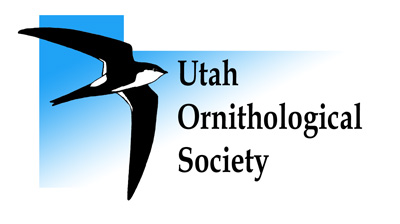
 identify a Lapland Longspur among the
Larks. This species is known to migrate as far south as northern Utah,
although they are not observed every year. They probably occur annually but
are not always seen by knowledgeable birders or DWR employees.
identify a Lapland Longspur among the
Larks. This species is known to migrate as far south as northern Utah,
although they are not observed every year. They probably occur annually but
are not always seen by knowledgeable birders or DWR employees. actually between MP 26.3 and 26.5 on
SR 83. Betsy Beneke, president of UOS, also drove up from Brigham City and
had located some flocks of Larks that included the Longspurs. Most of the
time the flocks were hidden in the tall grass clumps alongside the highway.
actually between MP 26.3 and 26.5 on
SR 83. Betsy Beneke, president of UOS, also drove up from Brigham City and
had located some flocks of Larks that included the Longspurs. Most of the
time the flocks were hidden in the tall grass clumps alongside the highway.
